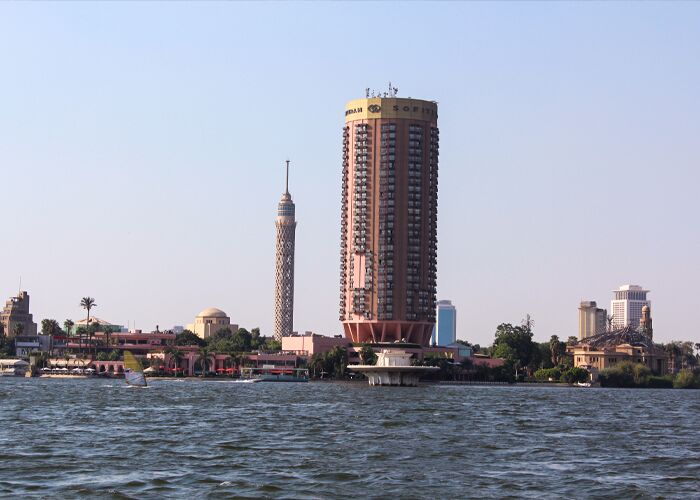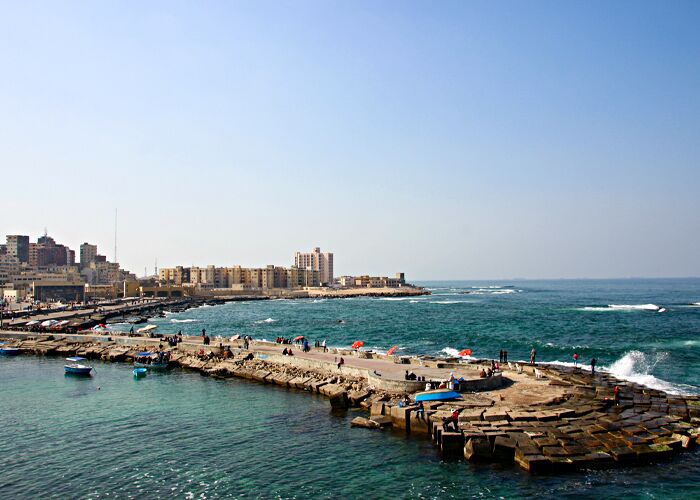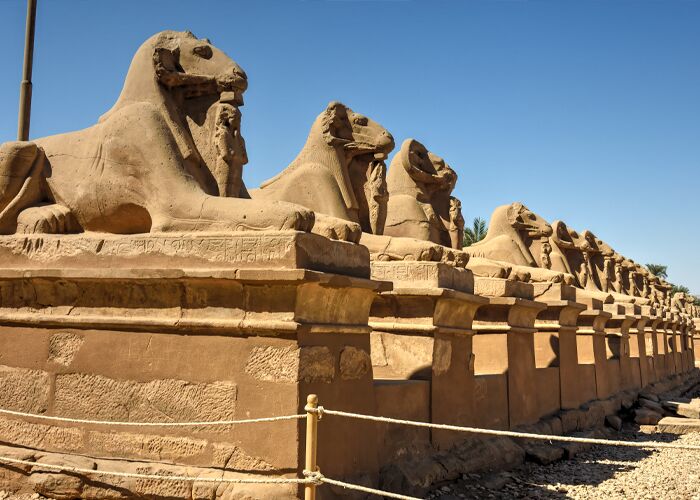Egypt’s Nile River.
The Nile River in Egypt is one of the most important waterways on Earth. It’s not too much of an exaggeration to say that the Nile gives life to all of Africa, but especially Egypt.
For a long time, this river (which is about 6,700 km long) was thought to be the longest in the world. However, it has now been proven that the Amazon is longer. Not only is the length of the Nile unusual, but so is the way it acts.
During the hottest months of the year, it doesn’t dry up like many other bodies of water in this part of the world. Instead, it overflows its banks, turns red, and stains the flooded areas.
The name of the river comes from a long time ago, when the first world civilizations were just getting started. The ancient Greek word “Neilos” is where the word “Nile” comes from. The Greeks also called the river Agyptos. This is likely where the name Egypt came from.
It is impossible to know how important the Nile was to the creation and growth of the ancient Egyptian civilization, which, along with the Sumerian civilization, is thought to be the first of all cultures. The Nile is Egypt. The river has a lot of plants and animals, and after the spill, a lot of silt fell to the ground. These are just a few of the gifts.
In the past, the world was full of dangers like droughts, floods, and animals that killed people. To get along well with nature, you had to work for it. So, the god Sebek, who was a Nile crocodile, was worshipped by the ancient Egyptians.
People thought that the god with a crocodile’s head kept the forces of darkness at bay. In his honour, temples were built where animals with special decorations ruled. When these animals died, they were buried with a lot of respect. Today, all of the crocodiles left the Nile. Also, some of these animals are very old, which is rare in Africa as a whole.
Egypt’s water comes from and flows into: River Nile
Since ancient times, no one has been able to figure out where the river’s water comes from, which makes it fill the valley every year. Several guesses were made, but none of them were set in stone. Because of this, for a long time, an allegory of the Nile was a god with a draped head, which was a sign of ignorance.
At the moment, there is no single view on either where it came from or how big it is. We know for sure that the Nile comes from the East African plateau. The Kagera River, which flows into Lake Victoria, is thought to be the most remote part of the plateau.
The tributaries cause the river to flow fast and flood. The Blue and White Niles are the most well-known. Lake Victoria is where the White Nile starts. Its name comes from the colour of the water, which comes from the clay particles that are suspended in it. The Blue Nile starts in Lake Tan, which is in the Ethiopian Highlands. The volume of the Nile is determined by how much water is in Lake Tan.
In Ethiopia, the Blue Nile is a holy river that people give food to and worship.
Again, tributaries change the colour of the Nile during the flood season. The red colour comes from the mountain minerals and melted glaciers that are in the water. The green colour comes from the tropical plants.
Basin and Valley of the Nile
The Nile is very long. Usually, this river is only linked to Egypt, but a large number of states, including Kenya, Rwanda, Ethiopia, Sudan, Tanzania, and Uganda, are in its basin. A little more than 20% of the Nile flows through Egypt. The rest of the river flows through other countries.
This small amount turned the Nile Valley into an oasis for tourists and a dreamland for archaeology and history fans. Most of Egypt’s big cities, including Cairo, the country’s capital and the biggest city in Africa, are on the Nile.
From the delta, where the river splits into channels and flows into the Mediterranean Sea, to the border with Sudan in the south, the valley is there. Egypt has cities, as well as some of the world’s oldest and most famous cultural monuments and museums. These include the Pyramids of Giza, the Sphinx, the Valley of the Kings, the Luxor and Karnak Temples, and the Egyptian Museum in Cairo.
Nile Cruises in Egypt
Back in the 19th century, travellers liked to take cruises on the Nile to see as much as possible at once.
“Death on the Nile,” a scary book by Agatha Christie, tells the story of one of the most famous trips down the Nile. This work shows how popular cruises were among wealthy people in Europe at the beginning of the 20th century.
Based on the book, a lot of movies have been made. So, anyone who wants to can easily get a taste of Egypt and even take a cruise along the Nile while watching and rewatching their favourite movies. Check out our top Nile cruises in Egypt.
City on the Nile
Cairo is the biggest city in the Valley. It gets a lot of tourists because of its Old Town. There is also a famous museum that has the world’s largest collection of ancient Egyptian art.
The famous pyramid tombs of the pharaohs Cheops, Khafre, and Mikerin, which were built before our time, are in the southwest suburb of Giza. This is one of the seven wonders of the world.
The Napoleonic Wars at the end of the 18th century cut off the nose of the Great Sphinx, which is near the pyramids. In Memphis and Saqqara, you can see a big statue of Ramses, the Serapeum, and an old graveyard.
Alexandria is the second-largest city, but it is a very important one. Alexander the Great started this seaport. It is best known for what it lost: a lighthouse that is also one of the seven wonders of the world and the story of the Alexandria Library.
Everyone has heard of Luxor and Thebes in some way: the temples of Karnak and Luxor, the Valley of Queens and Kings, the Colossi of Memnon and the Ramesseum, and the temple of Hatshepsut are all here.
In Aswan, there is a group of people who are Nubian, and there is a dam there that turned the Nile River into a lake, which makes it possible to harvest three times a year. Cities with names like El-Fayoum, Beni-Mazar, and El-Minya, which are hard to say, will show how people from the wealthy class live. Egypt also has nice villas and a high standard of living.
Visit Egypt with Egypt via travel
Check out our Egypt travel packages to see the beautiful landscapes and monuments of Egypt. If you want to see the temples and tombs of Upper Egypt, check out our Egypt Nile cruises.





